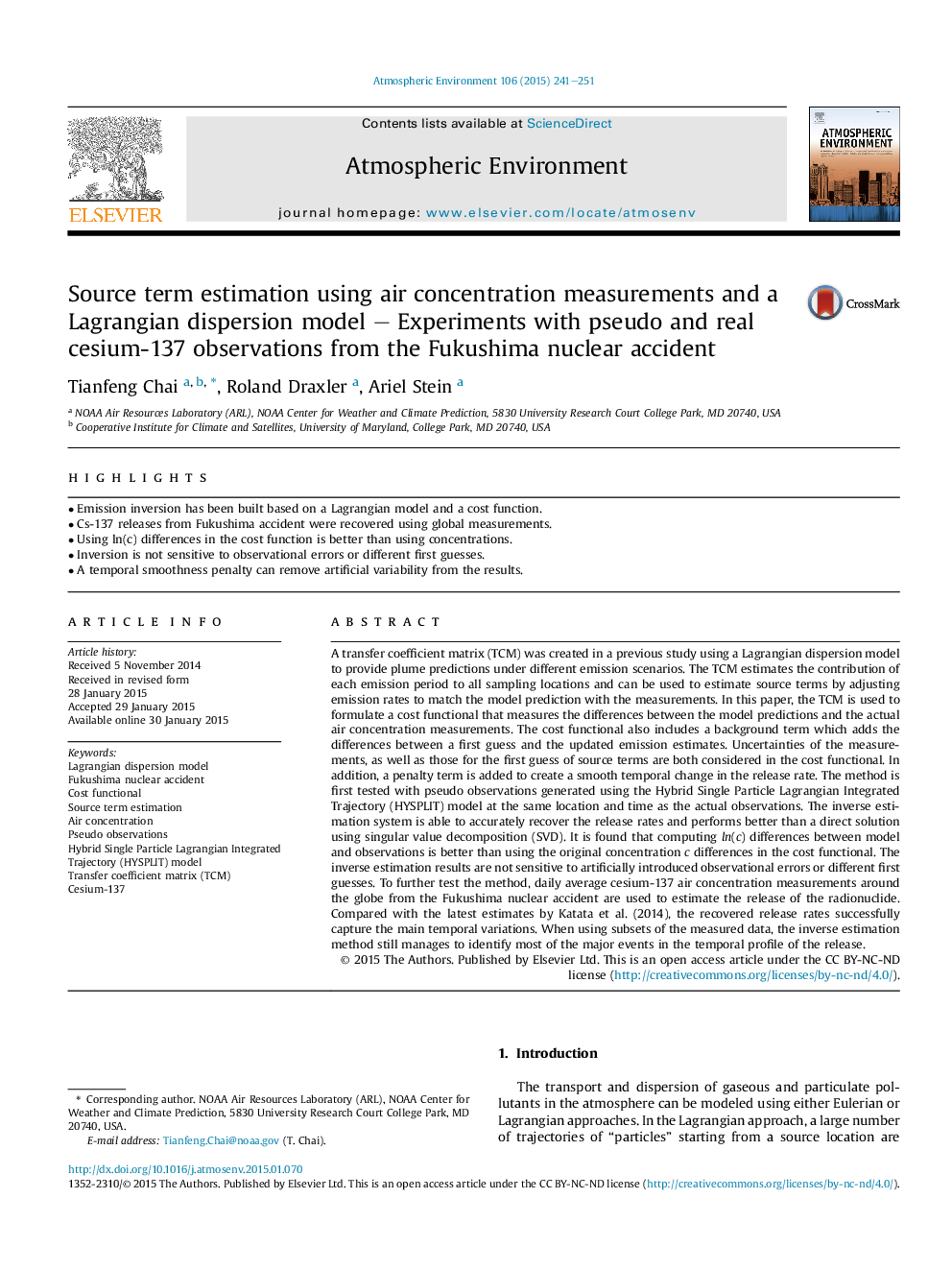| کد مقاله | کد نشریه | سال انتشار | مقاله انگلیسی | نسخه تمام متن |
|---|---|---|---|---|
| 6338300 | 1620365 | 2015 | 11 صفحه PDF | دانلود رایگان |

- Emission inversion has been built based on a Lagrangian model and a cost function.
- Cs-137 releases from Fukushima accident were recovered using global measurements.
- Using ln(c) differences in the cost function is better than using concentrations.
- Inversion is not sensitive to observational errors or different first guesses.
- A temporal smoothness penalty can remove artificial variability from the results.
A transfer coefficient matrix (TCM) was created in a previous study using a Lagrangian dispersion model to provide plume predictions under different emission scenarios. The TCM estimates the contribution of each emission period to all sampling locations and can be used to estimate source terms by adjusting emission rates to match the model prediction with the measurements. In this paper, the TCM is used to formulate a cost functional that measures the differences between the model predictions and the actual air concentration measurements. The cost functional also includes a background term which adds the differences between a first guess and the updated emission estimates. Uncertainties of the measurements, as well as those for the first guess of source terms are both considered in the cost functional. In addition, a penalty term is added to create a smooth temporal change in the release rate. The method is first tested with pseudo observations generated using the Hybrid Single Particle Lagrangian Integrated Trajectory (HYSPLIT) model at the same location and time as the actual observations. The inverse estimation system is able to accurately recover the release rates and performs better than a direct solution using singular value decomposition (SVD). It is found that computing ln(c) differences between model and observations is better than using the original concentration c differences in the cost functional. The inverse estimation results are not sensitive to artificially introduced observational errors or different first guesses. To further test the method, daily average cesium-137 air concentration measurements around the globe from the Fukushima nuclear accident are used to estimate the release of the radionuclide. Compared with the latest estimates by Katata et al. (2014), the recovered release rates successfully capture the main temporal variations. When using subsets of the measured data, the inverse estimation method still manages to identify most of the major events in the temporal profile of the release.
Journal: Atmospheric Environment - Volume 106, April 2015, Pages 241-251